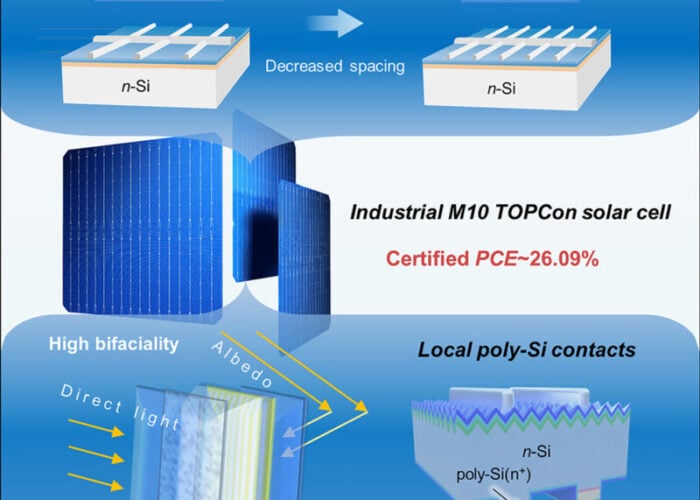
As the industry slowly shifts from p-type technology to n-type technology, the importance of selecting the right module for a given project is even more crucial. Yet, the way the industry operates, even among the biggest buyers, is through a bilateral conversation with one manufacturer at a time.
Mike Hall, CEO at Anza, a data and technology procurement marketplace for solar and energy storage in the US, compares it to how people used to buy airline tickets in the 80s and the need to call each airline separately to check prices and availability of tickets.
Try Premium for just $1
- Full premium access for the first month at only $1
- Converts to an annual rate after 30 days unless cancelled
- Cancel anytime during the trial period
Premium Benefits
- Expert industry analysis and interviews
- Digital access to PV Tech Power journal
- Exclusive event discounts
Or get the full Premium subscription right away
Or continue reading this article for free
“Right now, the market operates in an inefficient way that doesn’t make use of modern technology. The market is opaque or not transparent to the buyers and the sellers,” says Hall.
“Many clients we talked to are deciding what cell technology to buy. Do they buy mono-PERC technology? It’s still kind of the industry standard but is starting to get overtaken by TOPCon cell technology. And in most cases, you’re going to pay more for a module that has TOPCon cells. But the question is, how much more should you pay?”
Selecting the tech based on the project’s specifics
The shift between mono-PERC, the leader for many years, towards tunnel oxide passivated contact (TOPCon) began in 2023, especially in the second half of the year, as shown by JinkoSolar’s shipments up to the third quarter of 2023, with n-type modules accounting for nearly 60% of total shipments.
Hall adds that it is the same case with Anza’s clients which predominantly bought mono-PERC modules at the beginning of 2023, while TOPCon took the lead by the end of the year. “There are only just starting to be viable heterojunction (HJT) options in the US market, with real deliveries mostly towards the back half of 2024. So we haven’t seen a big conversion,” explains Hall.
As the technology available shifts from p-type to n-type, which one to choose and whether it is worth paying more for newer technologies is dependent on the specifics of a project. “The more you’re getting paid per megawatt hour, the more you should be willing to pay for a more efficient technology that will produce more megawatt hours,” says Hall.
This is the case for community solar projects in the US, explains Hall, where the value of HJT technology over TOPCon can be “really significant” as projects can get paid US$0.10/kWh or more.
Of course, a better way to evaluate which module to select for a given project would be to look at the entire lifetime of the system, rather than its price, says Hall, adding: “We think the industry should be shopping and making decisions, not based on costs, but on effective dollar per watt, because that’s the best proxy for total value. It does take into account the lifetime energy production.”
Use of data analytic tools to choose your module
By aggregating all the data from several manufacturers, it would allow developers, independent power producers and other module buyers to better compare the current market available to them.
“Without aggregating all that data and without having the technology to do the analytics, most companies are at best looking at three, four or five potential providers comprehensively. What we see is at any given time, there can be pretty significant spreads in the market. If you’re not surveying the whole market, you’re missing out on some value opportunity.”
This gives buyers three advantages: to make more optimal financial decisions, better assess risk and save time. “Right now, all of the risk items are opaque, be it counterparty risk or product risk. In the US we have a lot of trade risk and a lot of trade issues. All of that is opaque. The only way you can extract it is through a whole lot of calls and emails to the manufacturers and back and forth.”
Earlier this week, the company launched a new procurement evaluation platform which, among other things, included external supply factors such as the US’ antidumping and forced labour trade laws but also performance in extreme weather conditions or price changes.






